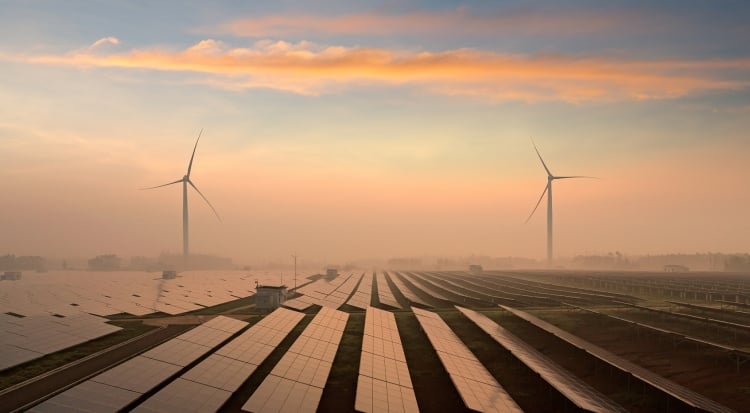
Image: Getty.
Solar helped the UK’s renewables fleet to yet another new record in 2018, contributing towards renewables clinching nearly one-third of power generation in Q3.
Figures released by the Department for Business, Energy and Industrial Strategy (BEIS) towards the end of last year confirmed that renewables had generated some 33.1% of the UK’s total power output throughout July, August and September, equivalent to around 25TWh.
And solar PV was a principal factor in that record, aided by the heatwave that basked much of the country in sunshine in July.
BEIS figures recorded that average daily sunshine hours in Q3 were up 26% year-on-year, and overall power generation from solar and wind throughout the period was up 11% on production in Q3 2017.
That 33.1% figure was a new record for renewables in Q3, the second consecutive record the UK’s renewables fleet had set after producing 31.7% of the UK’s power in Q2.
But while Nina Skorupska, chief executive at the Renewable Energy Association, lauded the record as “fantastic news for the industry”, she urged caution over future growth considering the current uncertainty surrounding the small-scale feed-in tariff.
Last month BEIS confirmed that it is to close the export tariff to new installations from 31 March 2019 as well as the feed-in tariff, effectively ending all financial support for small-scale renewables.
That decision came despite overwhelming opposition to the move and the government’s own impact assessment states that small-scale renewables deployment could slide to just 50MW per year as a result.
“Although the discouraging lower level of feed-in tariff installations is a telling sign of what is to come after the 31st March 2019, we urge the government to work with industry to introduce an alternative mechanism and unlock a route to market as soon as possible. We need to ensure that cheap, green and technologically exciting energy and the jobs that accompany it are accessible to everyone across the UK,” Skorupska said.

